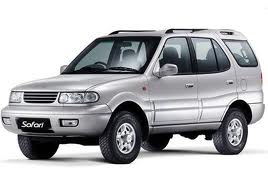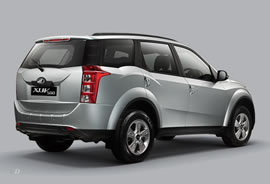Are you planning to buy a luxury and expensive car for yourself? As soon as the name of a luxury car comes up, this thought must be coming to your mind that I wish! If an SUV was available in the range of Rs 5 lakh to Rs 10 lakh, it would have been fun. The journey becomes comfortable. But, have you ever wondered whether this is an SUV after all? What is its full form and why do car manufacturing companies use SUV, XUV, MUV and TVU in the names of their car models? Do you understand the meaning of cars with these model names? If you do not know about these varieties of cars, then you should know about them. Anyway, leave it. ‘Der ayed-drust ayed (Come late, but come right).’ Come, let us try to explain to you the meaning of these car models with their full forms. Read the report…
Meaning of SUV and its full form
First of all, let us know about the popular SUV among luxury cars. The full form of SUV is Sports Utility Vehicles. Such models of luxury cars are called SUV because this car is designed on the lines of sports cars. Its specialty is that Sports Utility Vehicles This means that we can drive the SUV easily even on rough roads. Due to the ample space in the SUV, it is also called a family car. Such cars have more ground clearance and motor power.
Meaning and full form of MUV
Now let us tell you about MUV. full form of muv multi utility vehicle It happens. It is also called multi-utility vehicle. Such cars have been designed keeping in mind various types of uses. This car is used to carry more luggage, weight and passengers. The on-road performance of the MUV car is said to be good, but its off-road performance is not like that of an SUV car. It cannot move easily on rough roads carrying luggage, weight and passengers.
Full form and meaning of XUV
full form of xuv Crossover Utility Vehicles It happens. Such cars are slightly larger in size and their build quality is much better. In a way, you can also call this car a big SUV car. Almost all the features of SUV and XUV are the same. However, the exterior design of this car is much better than other cars. This car is considered good for family trips or long tours.
Full form and meaning of TUV
TVU full form Tough Utility Vehicles It happens. This car is similar to an SUV, but its size is slightly less than sports utility vehicles. In other words, you can also call it a small sports utility car.

.jpg)
 The XUV term is associated with the Mahindra XUV 500; it is an SUV produced by an Indian automobile company known as Mahindra and Mahindra. As it is an SUV, it certainly contains all the features of an SUV. This vehicle was designed and developed at the company’s build center present in Nashik and Chennai, whereas it is manufactured in Mahindra’s Chakan and Nashik plant in India. XUV 500 has the engine known as- mHawk140, Direct injection diesel engine 5th generation Variable Geometry Turbo. The max gross power of the engine is 140 Bhp (103kW) @ 3750 rpm and Max gross Torque is 330 Nm @1600-2800rpm. It comes with features like a fully-loaded GPS navigation system, a Driver Information System, Cruise Control, Intellipark Reverse Assist, and Smart Rain and Light sensors. The XUV500 is the first monocoque SUV developed by Mahindra and Mahindra.
The XUV term is associated with the Mahindra XUV 500; it is an SUV produced by an Indian automobile company known as Mahindra and Mahindra. As it is an SUV, it certainly contains all the features of an SUV. This vehicle was designed and developed at the company’s build center present in Nashik and Chennai, whereas it is manufactured in Mahindra’s Chakan and Nashik plant in India. XUV 500 has the engine known as- mHawk140, Direct injection diesel engine 5th generation Variable Geometry Turbo. The max gross power of the engine is 140 Bhp (103kW) @ 3750 rpm and Max gross Torque is 330 Nm @1600-2800rpm. It comes with features like a fully-loaded GPS navigation system, a Driver Information System, Cruise Control, Intellipark Reverse Assist, and Smart Rain and Light sensors. The XUV500 is the first monocoque SUV developed by Mahindra and Mahindra.

